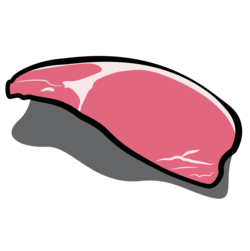World of Bacon

Man’s love for bacon (and everything it goes into) is as old as time itself. While this may sound like a statement exaggerated to epic proportions, there certainly is a ring of truth to it. According to many historical accounts, the earliest roots of bacon can be traced back to the Roman era. The Romans came up with the idea of using portions of pig and convert them into ‘petaso’, a food item that bore close semblance to bacon as we know, cook, eat and love today.
In different parts of the world, bacon is extracted and prepared in a variety of ways:
American-Style Bacon
- Description: The American-style bacon is also referred to as ‘side bacon’ because it is made using the pork belly, which is located on the hog’s side. Virginia bacon is a popular type of American bacon.
- Features: One of the most prominent features of American bacon is the absence of skin. It is available in thinly cut slices and is marked by streaks of fat and meat running alongside.
- Production: The American way of producing bacon involves dry curing the belly slices in salt first and then smoking them. Additional components like black pepper, brown sugar or maple syrup may be used during the process to enhance the flavor.
- Preparation: Being a fatty bacon, American bacon is preferably cooked in its own fat. In fact, it leaves behind a good amount of drippings in the pan, which can be reserved for later cooking.
British Bacon
- Description: British bacon is taken from the portion where the pig’s loin is attached to its belly. In the British terminology, the bacon extracted from the loin is called ‘rasher’, while the belly bacon is known as ‘streaky’.
- Features: The rasher comprises fatty parts of a pig’s loin, including the fat cap.
- Production: Unlike their American counterparts, the British like to wet cure their bacon in brine for 3-4 days. To give it further kick, flavorings like bay leaves and juniper berries may also be used.
- Preparation: Slow griddling is the ideal method of cooking the rasher as it allows all the fat to render itself and give the slice of bacon a delicious exterior.
Canadian Bacon
- Description: Canadian bacon can be considered a low fat derivative of the rasher. It is sometimes also known as ‘back bacon’ or ‘back ham’ because the meat is extracted from the center back portion of the pig.
- Features: Instead of the fat-rich belly portion, this bacon is taken from the much leaner eye of round part of the pig. Many believe that due to the lack of fat, Canadian bacon should be categorized more as a type of ham than bacon.
- Production: The production involves curing and smoking the meat. It is typically sold as round, ham-like slices. If it is brined or pickled instead of being smoked and then covered in ground yellow peas, it is called peameal bacon.
- Preparation: Since it's pretty much devoid of fat, it needs some additional grease when grilled or pan-fried.
Italian Bacon
- Description: Made from the fatty pork belly, pancetta takes the prize for being the most popular Italian bacon. It faces tough competition, however, at the hands of guanciale, which is taken from the cheeks.
- Features: Pancetta is defined by streaks of fat and is typically sold rolled-up or cubed. Guanciale, on the other hand, is richer in collagen.
- Production: Pancetta is typically cured with salt and other seasonings but is not smoked. Guanciale, also not smoked, is drenched in wine, flavored and stored in a stone niche for over a month
- Preparation: Both pancetta and guanciale need to be cooked before serving. Pancetta can be pan-seared in its own fat, while guanciale is best cooked low and slow to let the collagen infuse completely into the dish.
Irish Bacon
Irish bacon bears close semblance to Canadian bacon because it is also taken from the eye of round, making it a lean type of bacon. When it is cured and smoked, it can appear to be like boneless roast of pork loin, which can then be sliced to desired thickness.
Gypsy Bacon
Gypsy bacon is said to have originated from Hungary and is mostly available in Germany and Hungary. The slab is usually sliced thinly after being roasted and seasoned with paprika.
Apple Wood Smoked Bacon
As the name suggests, this type of bacon is smoked over chunks of wood from an apple tree that adds a sweet richness of flavor.
Fatback
True to its name, fatback is a chunk of fat sliced from the hog’s back. Due to its high fat content, it can be used as lard and may also be used to cover leaner portions of meat as they cook.
Peppered Bacon
During its production, it is dredged in ground pepper, giving it a characteristic spicy flavor.
Slab Bacon
Also cut from the side but unlike American bacon, it is unsliced and has the skin intact, although it needs to be removed before cooking. Typically, it is cubed and added to sauces, soups or stocks.

